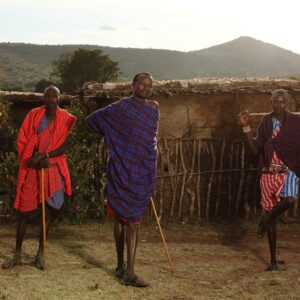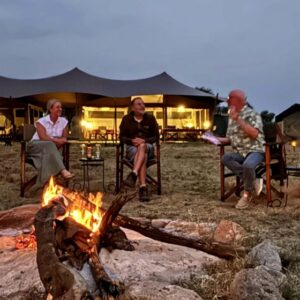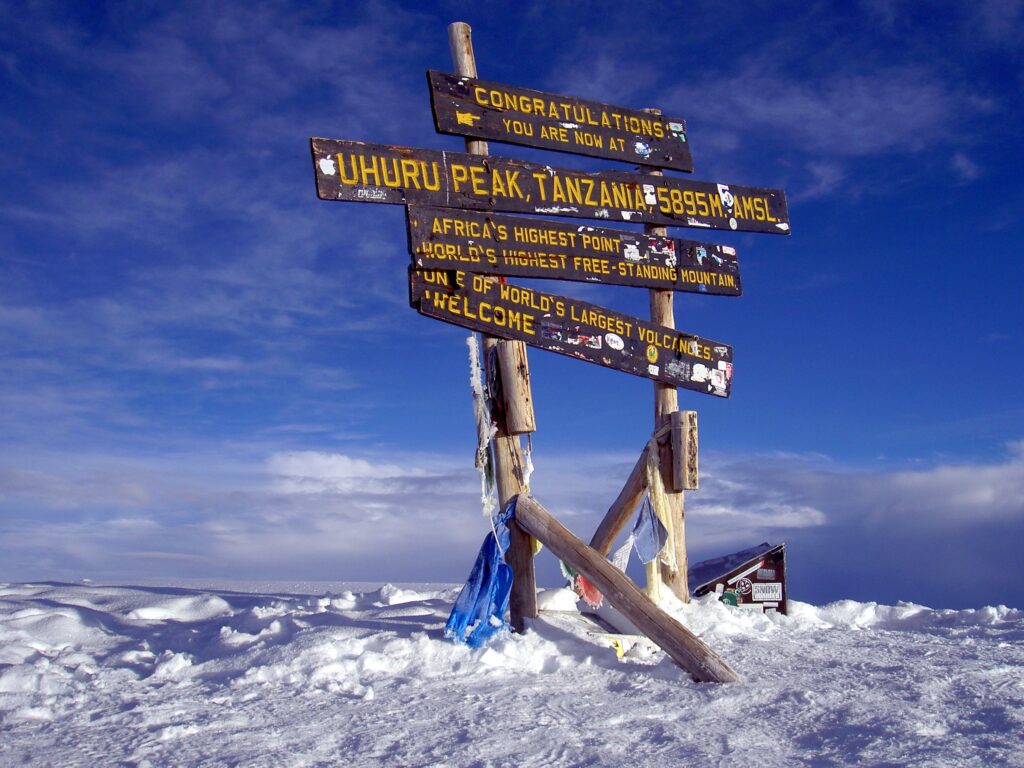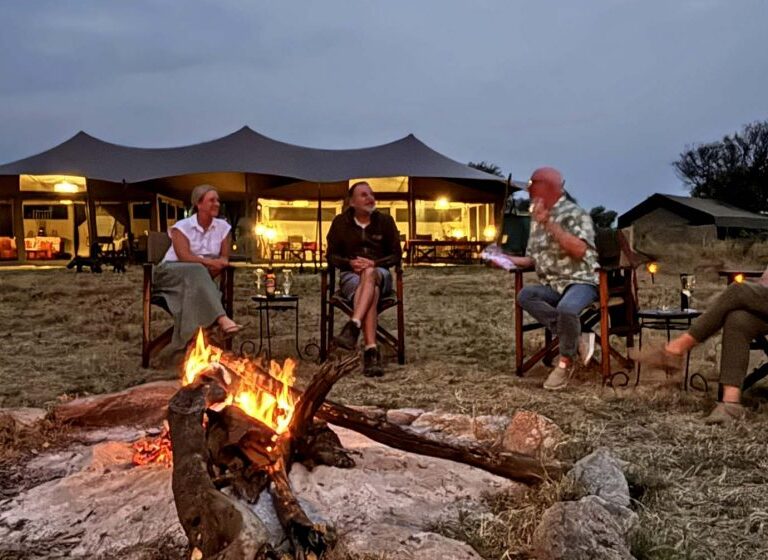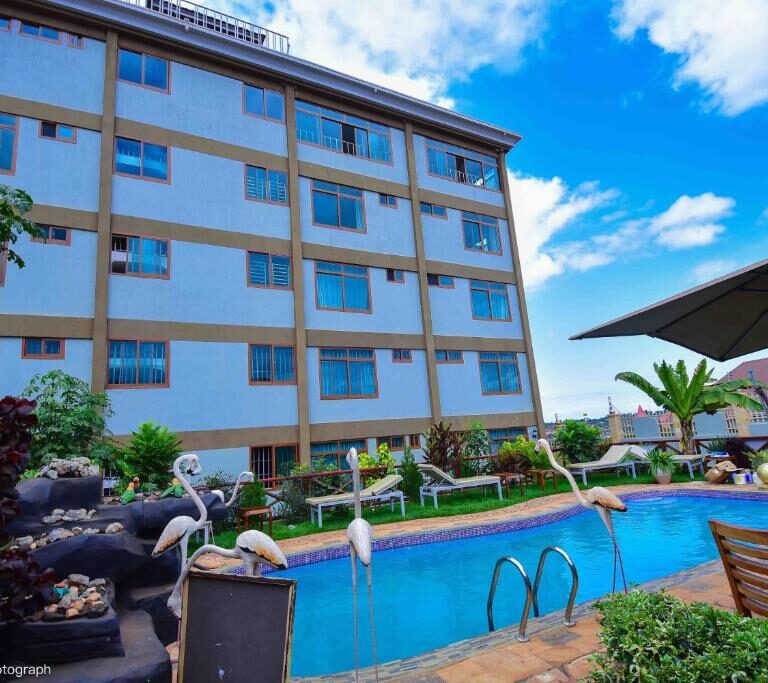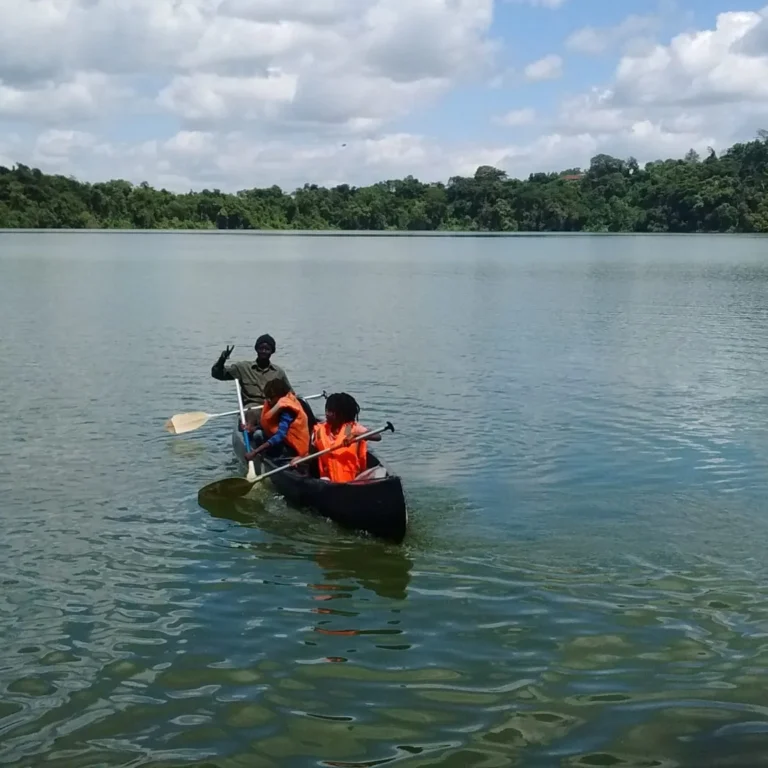To plan a Tanzania safari, first determine the best time to go, ideally the dry season (June-October) for wildlife viewing. Next, select your safari style and accommodation based on budget and preference, then choose a reputable tour operator and book early. Pack appropriate items, such as neutral-colored clothing and binoculars, and finally, research safari etiquette and safety guidelines to ensure a respectful and enjoyable experience.
A Tanzania safari is a once-in-a-lifetime adventure that brings you face-to-face with some of the world’s most iconic wildlife in their natural habitat. If you’re planning your first Tanzania safari, the process can feel overwhelming. From choosing the right time to go, selecting the perfect park, and organizing your accommodation, there’s much to consider. Fortunately, we’ve created this comprehensive guide to ensure that your experience is as smooth and memorable as possible.
Step 1: Decide the Best Time to Go on a Tanzania Safari
The best time for a Tanzania safari for first-timers is generally during the dry season (June to October) for excellent wildlife viewing, clearer skies, and fewer mosquitoes. However, a trip during the wet season (November to May) offers lush landscapes, baby animals, great birding, and lower prices with fewer tourists, while the shoulders of the wet season (November and December, March to May) can also be ideal for specific experiences and better deals. Your final decision depends on your priorities, such as witnessing the Great Migration, birding, or enjoying exclusive, budget-friendly travel. Timing plays a pivotal role in determining the quality of your safari experience. The best time to visit Tanzania for a safari depends largely on what you want to see and experience.
Dry Season (June to October): The dry season is the most popular time for safaris, especially if you’re hoping to see the “Big Five” — lions, elephants, leopards, rhinos, and buffaloes. With less rain, animals tend to congregate around waterholes, making them easier to spot. The weather is also more comfortable, with sunny days and cooler nights.
Wet Season (November to May): The wet season is less crowded and offers a unique experience. While the lush greenery and abundant wildlife are a sight to behold, the rains can make roads muddy and travel more difficult. However, this is the time when calving season occurs in the Serengeti, offering visitors the chance to witness newborn wildebeests and other animals.
Step 2: Choose Tanzania Safari Parks & Style
To plan your first Tanzania safari, determine your priorities like wildlife focus and budget, then choose a time between June and October for the dry season. Select a regional circuit, like the Northern Circuit for the Great Migration, then pick a safari style (game drives, walking safaris) and accommodations (lodges, tented camps) that fit your mood and budget. Finally, work with a reputable tour operator to customize your trip and prepare essential travel documents and vaccinations. Tanzania offers an array of parks and reserves, each with its unique charm. Your choice of park will influence what animals you can see and how your safari will unfold.
Serengeti National Park, known for its iconic migration of over a million wildebeests, is arguably the most famous safari destination in Tanzania. If you’re seeking large predators, this park is a must-visit. It offers traditional game drives, walking safaris, and even hot air balloon rides for an elevated view of the plains.
The Ngorongoro Crater is one of the world’s most unique wildlife destinations. It’s a UNESCO World Heritage site and home to a high concentration of animals, including black rhinos. The crater’s isolated ecosystem provides excellent game viewing, making it an ideal choice for first-timers.
Tarangire is known for its large herds of elephants and ancient baobab trees. If you prefer a quieter, less-crowded experience, this park offers an incredible alternative with a rich variety of wildlife.
The Selous Game Reserve is perfect for those seeking a more remote, off-the-beaten-path safari experience. This UNESCO World Heritage site offers game drives, walking safaris, and boat safaris along the Rufiji River, providing a diverse range of landscapes and activities.
Step 3: Choose Tanzania Safari Styles
To plan your first Tanzania safari, determine the best time to visit based on wildlife movements and your budget, then choose a safari destination, like the Northern Circuit for iconic parks, and a safari style, such as luxury lodges or camping. Select a reliable tour operator, plan for health and safety, pack appropriate gear, and understand safari etiquette to ensure a responsible and enjoyable trip. The style of your safari will depend on your preferences. Options include:
• Luxury safaris with private lodges, gourmet dining, and personalized services.
• Tented camps for a more intimate and rustic experience.
• Mobile safaris for a more adventurous experience, where your accommodations move with you.
Step 4: Select Tanzania Safari Accommodation
To plan your first Tanzania safari, start by setting a budget, defining your safari goals, choosing the best time to visit, and researching the Northern Tanzania parks like Tarangire, Ngorongoro, and Serengeti. Then, select accommodation based on comfort needs (luxury, mid-range, or budget camping), and book through a reputable tour operator. Finally, plan your itinerary, pack smart, and prepare for an unforgettable adventure. Accommodations in Tanzania vary widely depending on your budget and safari style. From high-end lodges to eco-friendly tented camps, there’s something for every type of traveler. Discover Guide to Taking Babies and Toddlers on an African Safari
• Luxury Lodges: These offer high-end amenities, private pools, and gourmet dining. Located within or near major parks, luxury lodges are ideal for a first-time safari if you want to combine comfort with wildlife viewing.
• Tented Camps: These provide an authentic experience, often situated in secluded areas for an immersive nature experience. Many of these camps include luxury tents with en-suite bathrooms and stunning views.
• Budget Accommodation: If you’re on a tighter budget, opt for budget campsites or simple lodges. These accommodations still offer great proximity to parks and excellent service.
Step 5: Book with a Reputable Tanzania Safari Tour Operator
One of the most important aspects of planning your Tanzania safari is booking with a reputable safari tour operator. A trusted operator will ensure that your trip is well-organized, safe, and fulfilling. They will also have intimate knowledge of the parks, which enhances your chances of seeing wildlife. Look for tour operators that:
• Are licensed and certified by Tanzania’s national tourism authorities.
• Offer tailored itineraries that suit your interests and budget.
• Provide a guide with local knowledge who can enrich your experience with fascinating wildlife facts and history.
Step 6: Understand Tanzania Safari Costs
A Tanzanian safari typically costs $300 to $1,000+ per person per day, depending on budget, luxury, and accommodation. To plan, set a budget, choose an itinerary with a reputable, registered operator, decide on private vs. shared and your accommodation level (camping, mid-range, luxury lodges), and pack essentials like a passport and visa. Consider traveling in the low season for lower costs and fewer crowds. The cost of a Tanzania safari can vary greatly depending on the time of year, accommodation, length of your trip, and activities chosen a guide to your first African Safari. Here are some key factors to consider:
• Park entry fees: These fees vary by park and can add up. Ensure that the tour operator includes these in the overall price.
• Accommodation: From budget camps to luxury lodges, accommodation prices vary significantly.
• Game drives and activities: Some tours include multiple game drives, walking safaris, or balloon safaris.
• Tips and extra costs: Tipping guides and staff is customary. You should budget for this in advance.
A typical 5-day safari with moderate accommodations may cost between $2,000 $5,000 per person. Prices increase for luxury safaris or private tours. Explore this: Ultimate Guide to Planning a Serengeti Safari
Step 7: Pack Smart for Your Tanzania Safari
To plan a successful Tanzania safari, focus on a packing list of neutral-colored, loose-fitting clothing for layering, sun protection like sunscreen and a wide-brimmed hat, essential documents, closed-toe shoes, sturdy binoculars, insect repellent, and medications, all packed in soft-sided bags due to strict luggage limits for bush planes. Packing for a safari requires careful consideration of both comfort and practicality. Here’s a list of essentials for your trip:
Light, neutral-colored clothing: Avoid bright colors and opt for khaki, brown, or olive tones that blend into the environment.
Comfortable footwear: Good-quality walking shoes or hiking boots are essential for game walks.
Sunscreen and a hat: Protect yourself from the harsh African sun.
Binoculars and a camera: Capture the stunning landscapes and wildlife encounters.
Insect repellent: Especially important if you’re visiting during the wet season when mosquitoes are more common. Take a look at: Must-Have Documents to Carry When Climbing Kilimanjaro
Step 8: Learn About Tanzania Safari Etiquette and Safety
Respect for nature and local culture is paramount. Always follow the rules set by your guide and park authorities, and be mindful of local customs. To plan a Tanzania safari, choose the dry season (June-October) for optimal wildlife viewing, book with a reputable operator, and pack neutral-colored clothing and sun protection. During your safari, always follow your guide’s instructions to ensure safety. Respect wildlife by maintaining a safe distance, not making noise or feeding animals, and respecting local communities by greeting villagers warmly.
• Respect wildlife: Never attempt to touch or feed animals. Stay inside your vehicle when in parks.
• Quiet behavior: Avoid loud noises, which may disturb wildlife or other visitors.
• Safety precautions: Your guide will ensure your safety, but it’s important to stay alert and follow instructions at all times.
Step 9: Transportation and Getting Around
Most safari operators provide transportation in 4×4 vehicles designed for rough terrain. Ensure that your operator has a well-maintained fleet and that your vehicle is equipped with all necessary amenities for comfort. For first-time Tanzania safari-goers, arrange your safari with a tour operator for transport logistics, flights (into Kilimanjaro/JRO or Dar es Salaam/DAR), and internal travel, which typically involves private 4×4 vehicles for park drives and walking tours. Key steps include choosing a reputable operator, booking the right time to travel, and deciding on your safari destinations, like the Serengeti and Ngorongoro Crater, to ensure a seamless and memorable experience.
• Internal flights: For longer trips or visits to more remote parks, consider booking internal flights. This allows you to save time and reach more distant parks like the Serengeti or Selous.
• Road travel: If you’re traveling by road, be prepared for long drives over uneven, dusty roads. Pack water, snacks, and a sense of adventure.
Step 10: Getting Your Travel Documents in Order
To get your documents in order for a Tanzania safari, first, ensure your passport has at least six months of validity from your departure date and at least two blank pages. Next, apply for the required visa; you can do this online through the e-visa portal or obtain it upon arrival in Tanzania. Essential health documents include your Yellow Fever vaccination certificate if arriving from a risk country, and you should consult a doctor about other recommended vaccines like typhoid and Hepatitis A. Finally, secure comprehensive travel insurance to cover emergencies, cancellations, and lost luggage. Before you go on your Tanzania safari, ensure that all your travel documents are in order:
• Visa: Most travelers will require a visa to enter Tanzania. Visas can be obtained online or upon arrival.
• Passport: Your passport should be valid for at least 6 months from your entry date.
• Vaccinations: Certain vaccinations, such as yellow fever, are recommended or required for entry into Tanzania.
Step 11: Capturing Memories and Immersing in the Experience
To plan a memorable Tanzania safari, determine your desired timing and safari style, then select key parks like the Serengeti and Ngorongoro based on wildlife viewing opportunities and your interests. Choose a reputable safari operator for personalized service and book your trip well in advance. Prepare by packing lightweight, neutral-colored clothing, essential gear like binoculars and sunscreen, and remember to stay open-minded and flexible to fully immerse yourself in the experience. A Tanzania safari is an experience of a lifetime, and capturing those memories is part of the journey. Bring a high-quality camera and ensure your gear is dustproof and water-resistant. Take plenty of photos, but also take time to truly immerse yourself in the moment. Listen to the sounds of the bush, watch the sun set over the Serengeti, and appreciate the vast beauty of the wilderness.
How Long Is the Tanzania Safari?
For a first-time Tanzania safari, an ideal duration is 7 to 10 days to experience the top parks like the Serengeti and Ngorongoro Crater at a relaxed pace. Shorter trips of 3-5 days offer a quick glimpse of wildlife in a few parks, while longer itineraries of 12+ days allow for a more comprehensive trip, including additional parks, cultural experiences, or relaxation on Zanzibar. A Tanzania safari can last anywhere from 3 days to 2 weeks, depending on your interests and time constraints. For first-timers, a 5 to 7-day safari is ideal as it allows you to explore different parks, engage in various activities, and have enough time for relaxation, according to the beginner’s guide to planning your first African Safari.
What to Expect on Your Tanzania Safari?
On your Tanzania safari, expect a thrilling and immersive experience. You’ll witness incredible wildlife encounters, from lions hunting to elephants bathing in waterholes. The landscapes are varied and breathtaking, from the vast Serengeti plains to the lush Ngorongoro Crater. Expect excellent service from your guide and accommodations, ensuring that every moment of your trip is memorable and comfortable.
FAQs: First Timer’s Guide to Planning Your Tanzania Safari
Planning your first Tanzania safari can be an exciting yet daunting experience. To help you navigate through the process with ease, we’ve compiled answers to the most frequently asked questions by first-time safari-goers. Whether it’s about the best time to go, packing tips, or what to expect, these FAQs will provide the information you need to ensure a smooth and memorable adventure.
When is the best time to go on a Tanzania safari?
The ideal time to go on a Tanzania safari largely depends on your preferences and the type of wildlife you want to see. Generally, the dry season from June to October is considered the best time for a safari. During this period, the weather is pleasant, and animals congregate around waterholes, making wildlife easier to spot. If you’re interested in witnessing the Great Migration or calving season, the best time to visit the Serengeti is from January to March when newborn animals are abundant. The wet season, from November to May, offers lush landscapes and fewer tourists, but wildlife can be harder to spot due to the dense vegetation.
What are the most popular safari parks in Tanzania?
The most popular safari parks in Tanzania include Serengeti National Park, known for the Great Migration, the Ngorongoro Crater with its Big Five in a unique caldera setting, Tarangire National Park, famous for its elephants and baobabs, and Lake Manyara National Park, home to tree-climbing lions. These parks are all part of the highly celebrated Northern Circuit.
How much does a Tanzania safari cost?
A Tanzania safari can cost anywhere from approximately $200 to over $1,500+ per person per day, varying significantly by comfort level, with budget options starting at $200-$350, mid-range safaris from $340-$575, and luxury experiences starting at $650 and going much higher. Factors such as accommodation type (camping, lodges, luxury tented camps), private versus group tours, park fees, vehicle and driver costs, and length of stay all influence the final price.
How do I choose the right Tanzania safari operator?
To choose the right Tanzania safari operator, research their reputation and read verified reviews on independent platforms like TripAdvisor and Google. Verify their experience, certifications, and commitment to safety and responsible tourism by checking industry memberships and their policies for ethical operations. Ensure the operator specializes in your preferred safari style, such as luxury or budget, and offers transparent pricing.
What should I pack for a Tanzania safari?
For a Tanzania safari, pack light-colored, loose-fitting clothing like long-sleeved shirts and trousers, a warm jacket for chilly mornings, comfortable closed-toe shoes and sandals, a wide-brimmed hat, sunglasses, strong insect repellent, high-SPF sunscreen, binoculars, and a camera with extra memory cards. Avoid bright colors and dark blues/blacks, as they can attract tsetse flies and scare animals. Remember your passport, visa, travel insurance, necessary vaccinations, and a basic first-aid kit.
Is it safe to go on a Tanzania safari?
Yes, Tanzania safari is generally very safe, particularly when traveling with a reputable safari operator. The key to safety is following the guidelines provided by your guide and park authorities. Additionally, it’s important to have proper travel insurance, including coverage for emergencies and medical evacuation, just in case. For example:
• Stay inside your vehicle during game drives.
• Maintain a safe distance from wildlife.
• Always follow your guide’s instructions regarding walking safaris or other activities.
What I Wish I Knew Before Visiting Tanzania For Safari?
Before a Tanzania safari, know that distances are vast and roads slow, so plan for significant travel time or use domestic flights. Plan your trip during the dry season (June to October) for peak wildlife viewing but consider the less crowded, lower-priced “green” season. Pack light-colored, neutral clothing and essential gear like binoculars, sunscreen, and insect repellent, and be prepared to pay tips in cash for services.
Do I need a visa to visit Tanzania?
Most visitors to Tanzania require a visa. Tourist visas can be obtained online or upon arrival at the airport. However, it’s advisable to apply for an e-visa before departure to streamline the process.
Additionally, check that your passport is valid for at least six months beyond your planned travel date. Ensure you have the necessary vaccinations (such as yellow fever) and carry proof of these, if required.
What animals will I see on a Tanzania safari?
Tanzania’s diverse national parks host an incredible variety of wildlife. The Big Five (lion, leopard, elephant, buffalo, and rhino) are commonly seen, especially in places like the Serengeti, Ngorongoro Crater, and Tarangire National Park. Seasonal migrations and calving seasons bring a variety of unique sightings, such as newborn animals and dramatic predator-prey interactions. In addition, you’ll likely spot:
• Cheetahs, hyenas, and jackals are hunting.
• Large herds of wildebeest and zebras.
• A wide range of bird species, including flamingos, eagles, and pelicans.
Can I go on a walking safari in Tanzania?
Yes, walking safaris are offered in several parks, such as Selous Game Reserve and parts of the Serengeti. A walking safari gives you a more intimate experience of the landscape and wildlife. You’ll be guided by an expert ranger who will provide insights into tracks, plants, and smaller animals that might be overlooked during a traditional game drive.
Tanzania Safari Guide – Tips for planning a successful safari
To plan a successful Tanzania safari, determine your budget, prioritize your interests to select the right parks like the Serengeti for the Great Migration or Ngorongoro Crater for the Big Five, book well in advance, and understand that the experience is expensive. The dry season (June-October) offers the best wildlife viewing but more crowds, while the green season (November-May) is quieter and more affordable, though with more rain. Pack layers of neutral-colored clothing, a good camera and binoculars, and essential documents like your yellow fever vaccination card.
How long should my Tanzania safari be?
For first-timers, a 5 to 7-day safari is ideal. This timeframe allows you to visit multiple parks, experience different landscapes, and enjoy a variety of wildlife encounters. If you have more time and want to explore in greater depth, you can extend your safari to 10 to 14 days, including visits to remote reserves like Selous or Ruinsori.
What is Tanzania safari etiquette?
Tanzania safari etiquette emphasizes respecting the wild nature of the environment and its inhabitants by following your guide’s instructions, staying in the vehicle unless told otherwise, maintaining a quiet and calm demeanor, keeping a safe distance from animals, never feeding or touching wildlife, and disposing of all waste properly to preserve the natural habitat. Culturally, it’s important to be mindful of local customs, including dressing modestly in communities and using your right hand for eating and giving, while avoiding public displays of affection, one of the first-timers’ guides to planning a Safari in East Africa.
How do I capture the best photos during my safari?
To capture the best safari photos, photograph during the golden hours (sunrise and sunset) for optimal light, focus on animal behavior, and use a fast shutter speed and burst mode for unpredictable action. Utilize the rule of thirds and experiment with different angles for compelling compositions. Shoot in RAW format for maximum editing flexibility, ensure your camera is stable using a beanbag or tripod, and remember to bring extra memory cards and batteries.


